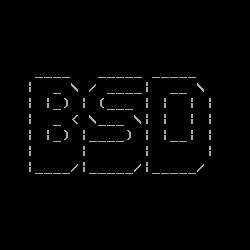Netflix Open Connect Network: FreeBSD, Not Linux

Open Connect Network is finally Netflix's own content distribution network. With Open Connect, Netflix plans to eventually serve all of its traffic through there but right now only around 5% of the data is being transferred this way. Netflix has decided to open-source their hardware and software design to Open Connect Network.
Mentioned on the Netflix blog, "As part of Open Connect, we are also sharing our hardware design and the open source software components of the server. These cost-efficient designs are suitable for any high-volume provider of large media files. We welcome commentary and improvements, which will be shared with the community with the goal of a faster, less expensive Internet for all."
To the surprise of some, the Netflix Open Connect Network isn't running Linux but rather FreeBSD. Netflix is also contributing back to FreeBSD. For those curious why, the FreeBSD usage is explained in part on the mailing list by Scott Long of Netflix -- this message is also copied below.
Yes, we are indeed using FreeBSD at Netflix! For those who are interested, I recently moved from Yahoo to Netflix to help support FreeBSD for them, and I'm definitely impressed with what is going on there. Other than a few small changes, we're using stock FreeBSD 9, tracking the 9-stable branch on a regular basis. Our chassis is a semi-custom 4U 19" form factor with thirty six 3TB SATA disks and 2 SSDs. Each disk has its own UFS+J filesystem, except for the SSDs that are mirrored together with gmirror. The SSDs hold the OS image and cache some of the busiest content. The other disks hold nothing but the audio and video files for our content streams. We connect to the outside world via a twin-port Intel 10GBe optical NIC (only one port is active at the moment), and we use LSI MPT2 controllers for 32 of the 36 disks. The other 4 disks connect to the onboard AHCI SATA controller. All of the disks are direct-attach with no SAS backplanes or expanders. Out-of-band management happens via IPMI on an on-board 1Gb NIC. The entire system consumes around 500W of power, making it a very efficient appliance for its functionality.For additional reading, see Why Should You Use FreeBSD and Reasons Why You Should Not Use FreeBSD.
Netflix is also at the front of the internet pack with IPv6 roll-out, and FreeBSD plays an essential part of that. We've been working hard on stabilizing the FreeBSD IPv6 stack for production-level traffic, and I recommend that all users of IPv6 update to the latest patches in 9-stable and 8-stable. Contact me directly if you have questions about this. That said, we're excited about World IPv6 Day, and we're ready with AAAA DNS records and content service from both Amazon and the traditional CDNs as well as our OpenConnect network.
From an advocacy standpoint, Netflix represents 30% of all North American internet traffic during peak hours, and FreeBSD is becoming an integral part of that metric as we shift traffic off of the traditional CDNs. We're expanding quickly, which means that FreeBSD is once again a core part of the internet infrastructure. As we find and fix stability and performance issues, we're aggressively pushing those changes into FreeBSD so that everyone can benefit from them, just as we benefit from the contributions of the rest of the FreeBSD ecosystem. We're proud to be a part of the community, and look forward to a long-term relationship with FreeBSD.
If you have any questions, let me know or follow the information links on the OpenConnect web site.
50 Comments

